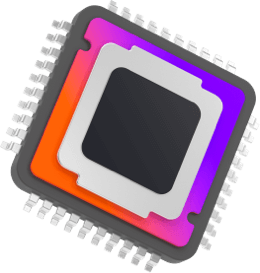| Qualcomm Snapdragon 865 | Intel Core i9-10900K | |
| 10 W | Max TDP | 125 W |
| NA | Power consumption per day (kWh) | NA |
| NA | Running cost per day | NA |
| NA | Power consumption per year (kWh) | NA |
| NA | Running cost per year | NA |
Qualcomm Snapdragon 865 vs Intel Core i9-10900K

The Qualcomm Snapdragon 865 operates with 8 cores and 8 CPU threads. It run at 2.84 GHz base 1.80 GHz all cores while the TDP is set at 10 W.The processor is attached to the N/A CPU socket. This version includes 4.00 MB of L3 cache on one chip, supports 4 memory channels to support LPDDR4X-4266LPDDR5-5500 RAM and features PCIe Gen lanes. Tjunction keeps below -- degrees C. In particular, Kryo 585 Architecture is enhanced with 7 nm technology and supports None. The product was launched on Q4/2019

The Intel Core i9-10900K operates with 10 cores and 8 CPU threads. It run at 5.30 GHz base 4.90 GHz all cores while the TDP is set at 125 W.The processor is attached to the LGA 1200 CPU socket. This version includes 20.00 MB of L3 cache on one chip, supports 2 memory channels to support DDR4-2933 RAM and features 3.0 PCIe Gen 16 lanes. Tjunction keeps below 100 °C degrees C. In particular, Comet Lake S Architecture is enhanced with 14 nm technology and supports VT-x, VT-x EPT, VT-d. The product was launched on Q2/2020
Qualcomm Snapdragon 865
Intel Core i9-10900K
Compare Detail
| 2.84 GHz | Frequency | 3.70 GHz |
| 8 | Cores | 10 |
| 2.84 GHz | Turbo (1 Core) | 5.30 GHz |
| 1.80 GHz | Turbo (All Cores) | 4.90 GHz |
| Hyperthreading | Yes |
|
| Overclocking | Yes |
|
| hybrid (Prime / big.LITTLE) | Core Architecture | normal |
| Qualcomm Adreno 650 | GPU | Intel UHD Graphics 630 |
| 0.59 GHz | GPU (Turbo) | 1.20 GHz |
| 7 nm | Technology | 14 nm |
| 0.59 GHz | GPU (Turbo) | 1.20 GHz |
| 12.0 | DirectX Version | 12 |
| 1 | Max. displays | 3 |
| LPDDR4X-4266LPDDR5-5500 | Memory | DDR4-2933 |
| 4 | Memory channels | 2 |
| Max memory | ||
| ECC | No |
|
| 1.75 MB | L2 Cache | -- |
| 4.00 MB | L3 Cache | 20.00 MB |
| PCIe version | 3.0 | |
| PCIe lanes | 16 | |
| 7 nm | Technology | 14 nm |
| N/A | Socket | LGA 1200 |
| 10 W | TDP | 125 W |
| None | Virtualization | VT-x, VT-x EPT, VT-d |
| Q4/2019 | Release date | Q2/2020 |
Cinebench R23 (Single-Core)
Cinebench R23 is the successor of Cinebench R20 and is also based on the Cinema 4 Suite. Cinema 4 is a worldwide used software to create 3D forms. The single-core test only uses one CPU core, the amount of cores or hyperthreading ability doesn't count.
Cinebench R23 (Multi-Core)
Cinebench R23 is the successor of Cinebench R20 and is also based on the Cinema 4 Suite. Cinema 4 is a worldwide used software to create 3D forms. The multi-core test involves all CPU cores and taks a big advantage of hyperthreading.
Cinebench R20 (Single-Core)
Cinebench R20 is the successor of Cinebench R15 and is also based on the Cinema 4 Suite. Cinema 4 is a worldwide used software to create 3D forms. The single-core test only uses one CPU core, the amount of cores or hyperthreading ability doesn't count.
Cinebench R20 (Multi-Core)
Cinebench R20 is the successor of Cinebench R15 and is also based on the Cinema 4 Suite. Cinema 4 is a worldwide used software to create 3D forms. The multi-core test involves all CPU cores and taks a big advantage of hyperthreading.
Cinebench R15 (Single-Core)
Cinebench R15 is the successor of Cinebench 11.5 and is also based on the Cinema 4 Suite. Cinema 4 is a worldwide used software to create 3D forms. The single-core test only uses one CPU core, the amount of cores or hyperthreading ability doesn't count.
Cinebench R15 (Multi-Core)
Cinebench R15 is the successor of Cinebench 11.5 and is also based on the Cinema 4 Suite. Cinema 4 is a worldwide used software to create 3D forms. The multi-core test involves all CPU cores and taks a big advantage of hyperthreading.
Geekbench 5, 64bit (Single-Core)
Geekbench 5 is a cross plattform benchmark that heavily uses the systems memory. A fast memory will push the result a lot. The single-core test only uses one CPU core, the amount of cores or hyperthreading ability doesn't count.
Geekbench 5, 64bit (Multi-Core)
Geekbench 5 is a cross plattform benchmark that heavily uses the systems memory. A fast memory will push the result a lot. The multi-core test involves all CPU cores and taks a big advantage of hyperthreading.
iGPU - FP32 Performance (Single-precision GFLOPS)
The theoretical computing performance of the internal graphics unit of the processor with simple accuracy (32 bit) in GFLOPS. GFLOPS indicates how many billion floating point operations the iGPU can perform per second.
AnTuTu 8 benchmark
The AnTuTu 8 Benchmark measures the performance of a SoC. AnTuTu benchmarks the CPU, GPU, Memory as well as the UX (User Experience) by simulating browser and app usage. AnTuTu can benchmark any ARM CPU that runs under Android or iOS. Devices may not be directly compareable if the benchmark has been performed under different operating systems.
Blender 2.81 (bmw27)
Blender is a free 3D graphics software for rendering (creating) 3D bodies, which can also be textured and animated in the software. The Blender benchmark creates predefined scenes and measures the time (s) required for the entire scene. The shorter the time required, the better. We selected bmw27 as the benchmark scene.
Estimated results for PassMark CPU Mark
Some of the CPUs listed below have been benchmarked by CPU-Comparison. However the majority of CPUs have not been tested and the results have been estimated by a CPU-Comparison’s secret proprietary formula. As such they do not accurately reflect the actual Passmark CPU mark values and are not endorsed by PassMark Software Pty Ltd.
Monero Hashrate kH/s
The crypto currency Monero has been using the RandomX algorithm since November 2019. This PoW (proof of work) algorithm can only efficiently be calculated using a processor (CPU) or a graphics card (GPU). The CryptoNight algorithm was used for Monero until November 2019, but it could be calculated using ASICs. RandomX benefits from a high number of CPU cores, cache and a fast connection of the memory via as many memory channels as possible

Electric Usage Estimate


